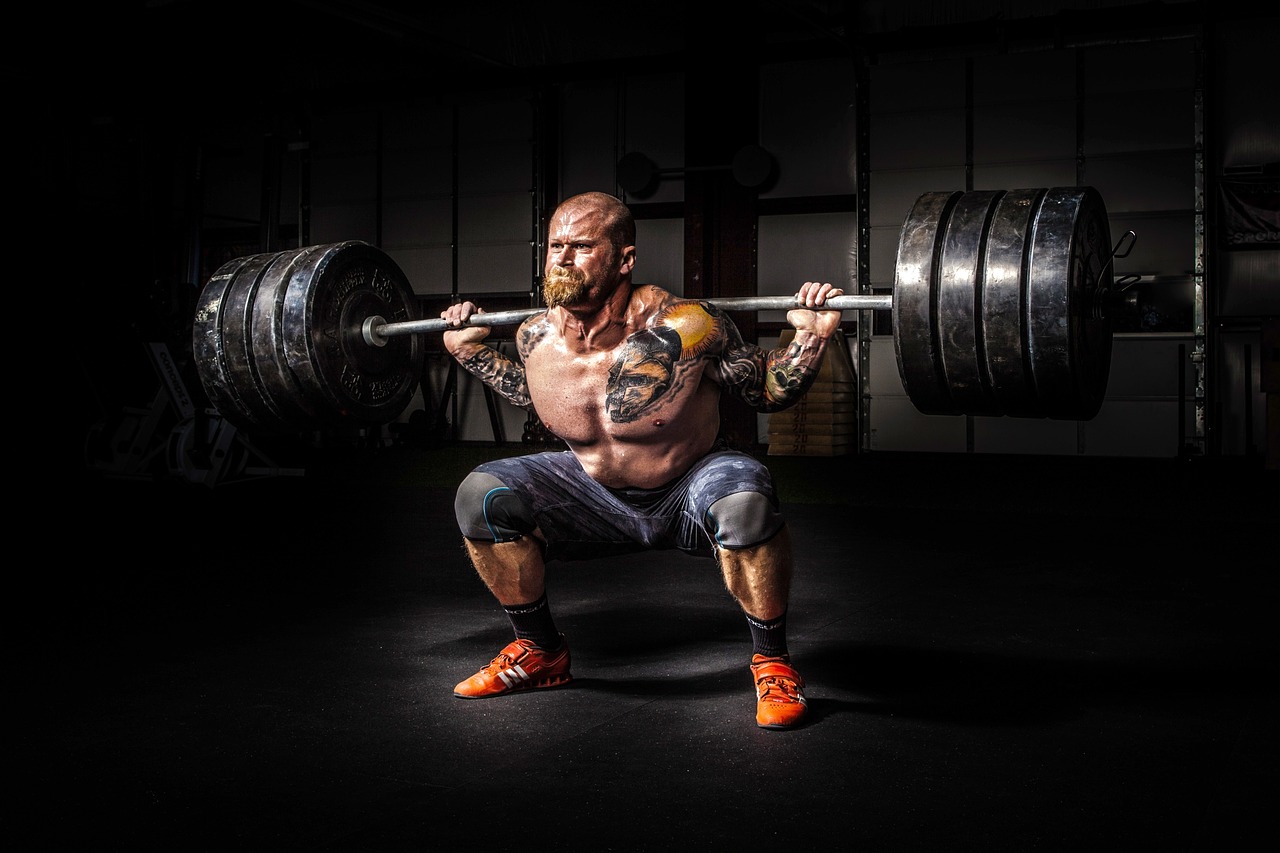We’ve probably all heard that squats are bad for the knees. This all comes from a classic study done in the 1960’s by a professor at the University of Texas named Karl Klein that looked at the impact of the “deep squat” exercise on the knees. The deep squat exercise (in his study) is where the athlete squats all the way down until the hamstrings touch the calves. In that study he compared the knees of weightlifters (perform the deep squat as part of training) with a group that had never done the deep squat exercise. He determined that almost 50% of the squatters had medial collateral ligament (MCL) instability, almost 70% of the squatters had lateral collateral ligament (LCL) instability, and almost 50% of the squatter had anterior cruciate ligament (ACL) instability. By comparison, an insignificant number of the non squatters had MCL and LCL instability and approximately 40% had ACL instability. His conclusion was that the deep squat exercise caused the instability in the squatting group. He had two recommendations as a result of his findings: First, the deep squat exercise should be avoided. Second, squats should only be done until the thighs are parallel to the floor (he called this a half squat).
The study seems pretty definitive, right? Since then a number of things have happened:
• First, nobody actually read the study. Dr. Klein recommended that squatting until your hamstrings touch your calves be avoided, but that half squats (i.e. parallel to the floor) are fine. A lot of people looked at this study as an excuse to avoid squats altogether.
• Second, nobody has been able to reproduce this study, even using Dr. Klein’s own methods. Now this is actually important; with all the weightlifters, powerlifters, bodybuilders, and athletes using the deep squat and the half squat exercise today we should notice some link between the exercise and damage to the knees.
• Third, a lot of research has been done on how the squat exercise impacts the knees and it doesn’t work like most people think. The rest of this part of the article is going to discuss how squats impact the knees.
Broadly speaking, the squat impacts the knees in one of three ways:
1. Tibiofemoral compression
2. Cruciate ligament tension
3. Patellofemoral compression
Tibifemoral (TF) compression refers to the compression of the femur (thigh bone) on the tibia (shin bone). To a point this is important because it keeps the tibia from moving forwards or backwards relative to the femur (i.e. it protects your ACL and PCL). Too much, however, could be bad as it could damage the meniscus in your knee or your cartilage. According to Escamilla, et al. (2001) TF compression increases as you descend in the squat and decreases as you stand up. It is also slightly higher for wide-stance (i.e. feet wider than shoulder width) squats. This means that theoretically, too much weight combined with a squat that is too deep/too wide could damage the meniscus and cartilage in the knee. In practical terms it means that if you have an injury to either area, you need to avoid really deep/wide squats.
Your cruciate ligaments are important because the keep the tibia from moving forwards or backwards too far relative to the femur. The squat does not appear to stress the ACL regardless of stance or depth (Escamilla, et al. 2001). There’s a number of reasons for this. First, the hamstrings take up a lot of the tension that would exist. As I discussed earlier, the hamstrings are pretty much active throughout the entire squat exercise. Second, the gastrocnemius helps to take up some of the tension the ACL might experience. Third, the fact that the squat is weight bearing (i.e. you are standing up) causes TF compression which helps to reduce the tension that the ACL might otherwise experience.
Now, the PCL is a different story entirely. The tension on the PCL increases during the descent of the squat and decreases as you get out of the bottom position. This means that people with PCL injuries need to avoid squats deeper than 50-60 degrees at the knees.
Patellofemoral (PF) compression refers to the patella acting on the femur. Clearly if your patella were rubbing on the femur it would be extremely painful. PF compression increases as you descend into the squat, the compression is greatest at around 50-80 degrees of knee flexion (i.e. above parallel). It decreases as you get out of the squat. This means that people with PF injuries should avoid squatting deeper than 50 degrees.
The squat isn’t bad for healthy knees. Squats lower than 50-60 degrees could be a problem for people with certain types of knee injuries, but if you are healthy you’re probably fine as long as you observe good technique. The next post will cover technique on the squat.
References:
Escamilla, R.F. (2001). Knee biomechanics of the dynamic squat exercise. Medicine and Science in Sports and Exercise, 33(1), 127-141.
Escamilla, R.F., G.S. Flesig, T.M. Lowry, S.W. Barrentine, & J.R. Andrews. (2001). A three-dimensional biomechanical analysis of the squat during varying stance widths. Medicine and Science in Sports and Exercise, 33(6), 984-998.
Klein, K. (1961). The deep squat exercise as utilized in weight training for athletics and its effect on the ligaments of the knee. Journal of the Association of Physical and Mental Rehabilitation, 15(1), 6-11, 23.


